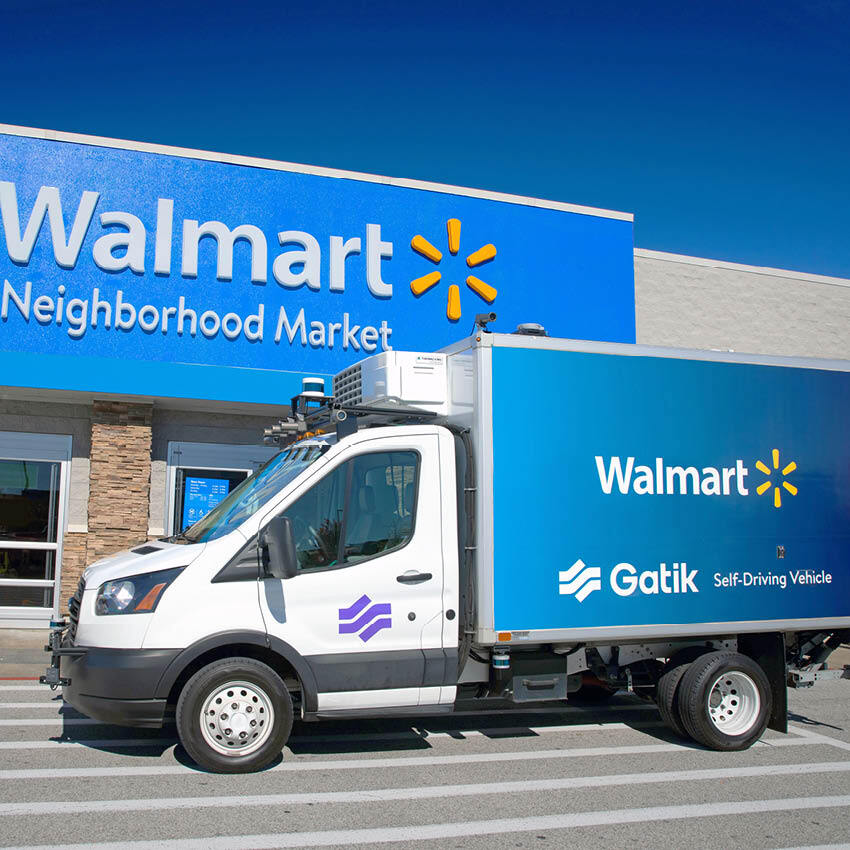The global economy has encountered massive supply chain disruptions as it has struggled to bounce back from the Covid-19 pandemic. In the U.S., a shortage of truck drivers (especially long-haul truck drivers) has become one of the biggest bottlenecks.
Several companies are racing to address this problem by developing autonomous trucks. In some areas, autonomous trucks have been operating regularly on public roads for two years or more, albeit with a safety driver available to take over if necessary. Recently, Walmart and self-driving truck startup Gatik announced that they launched fully driverless operations in Arkansas back in August. Other competitors aim to remove safety drivers from their trucks in the near future, too.
[callout]Retailers should expect elevated freight and supply chain costs to continue. And they need to develop more effective strategies to mitigate the impact of supply chain congestion, which is likely to be a recurring problem for several more years at a minimum.[/callout]
However, self-driving trucks won\’t be able to make up for the shortage of truck drivers until the mid-2020s at best. Even if that ambitious target proves feasible, the U.S. can\’t afford to wait four years to get goods moving again. And in the short term, efforts to speed the deployment of autonomous trucks could actually worsen the nationwide shortage of truck drivers.
Truck Drivers Become Scarce
Several years ago, the American Trucking Associations (ATA) warned that the U.S. was facing a shortage of more than 60,000 truck drivers. The pandemic made things worse, as it caused some truck drivers to retire early and led to very few new drivers being trained last year. A surge in demand for many types of goods has exacerbated the problem.
As a result, the ATA said last month that the driver shortage has increased to 80,000. The trade group expects the shortage to grow continuously for the foreseeable future, particularly in long-haul trucking. Not surprisingly, trucking firms have been raising wages rapidly to recruit more drivers. However, at an industry level, these efforts have mostly fallen flat. It isn\’t easy at any pay rate to find people with good driving records who can pass the necessary background checks and drug tests and are willing to spend long periods of time away from home.
The Promise of Autonomy
Deploying autonomous trucks at scale could address this growing driver shortage. While Gatik focuses on short-haul \”middle-mile\” routes, other self-driving truck companies are targeting the long-haul trucking market, which has had the hardest time recruiting enough drivers to meet demand.
For example, TuSimple (which raised $1.35 billion in an IPO earlier this year) has been testing autonomous trucks for several years, mainly in Arizona. It has logged over 160,000 autonomous miles driven in revenue service for UPS, its most prominent partner. So far, TuSimple has utilized a safety driver for all of its operations. But in early November, the company confirmed that it expects to begin testing its trucks on public roads with no safety driver by year-end.
Autonomous trucks will have several advantages over traditional trucks beyond serving as a workaround for driver shortages. Most importantly, they will be much less prone to accidents, which typically are caused by driver error and/or fatigue. Additionally, thanks to their superhuman senses, they can drive in a manner that maximizes fuel efficiency. TuSimple says it has achieved a 13 percent improvement in fuel efficiency over human drivers in its operations with UPS.
When Will the Technology Really Be Ready?
While autonomous truck developers are finally starting to operate their vehicles on public roads without safety drivers, that won\’t instantly make truck drivers obsolete.
TuSimple expects to begin delivering autonomous trucks at scale in 2024. Competitor Embark has a similar target. However, retailers and consumer goods companies that are struggling to meet demand due to supply chain challenges can\’t afford to wait that long to get goods moving again.
There\’s no guarantee that self-driving trucks will be ready for primetime by 2024. Companies developing self-driving technology for passenger cars have repeatedly delayed their planned commercial rollouts. And while some states already allow autonomous vehicle operations, others could continue to drag their feet for years to come.
Moreover, TuSimple and its competitors are developing Level 4 autonomous driving solutions: one level shy of \”full autonomy.\” A Level 4 autonomous vehicle can operate without a driver at the wheel, but only under certain conditions. Some limitations of Level 4 autonomous systems would not be problematic for long-haul trucking. For example, \”geofencing\” (which limits the autonomous vehicle to driving routes that have been previously mapped) wouldn\’t represent a major constraint for most truck operators in the long-haul sector, as their trucks generally follow predictable routes on major highways.
However, a typical limitation of Level 4 autonomous vehicles is that they may not work in inclement weather. That would significantly reduce their utility for addressing the shortage of truck drivers. If autonomous trucks only work 95 percent of the time, companies looking to move goods will need to accept that trucking operations would come to a complete halt in a snowstorm (for example). Alternatively, trucking companies would need to have a cadre of backup drivers ready to take over in any region with sufficiently bad weather. Neither option is terribly attractive.
Level 5 autonomous vehicles, which can operate without human intervention under all conditions, would solve these issues. But no company is making promises about when it will have a Level 5 autonomous truck available.
Future Solutions Beget Problems Now
As noted above, autonomous trucks won\’t roll out broadly until 2024 at best. They may not be available in great enough numbers to make a meaningful dent in the truck driver shortage until late in the decade.
In the meantime, the pending arrival of self-driving trucks could exacerbate the shortage of truck drivers. It is becoming increasingly common knowledge that autonomous vehicles (including trucks) are on the way. That makes the prospect of spending time and money to train as a truck driver less attractive than ever. Truck drivers are starting to realize that they might have to find new careers within a decade or so.
Companies throughout the consumer goods sector need to prepare for the truck driver shortage that will persist for quite a few years. Trucking companies will have to continue to raise wages to recruit enough drivers in light of the tough working conditions and uncertain future career prospects for long-haul truck drivers. Even then, the supply chain will likely operate with much less slack in the system than would be optimal.
In short, retailers should expect elevated freight and supply chain costs to continue. And they need to develop more effective strategies to mitigate the impact of supply chain congestion, which is likely to be a recurring problem for several more years at a minimum.




